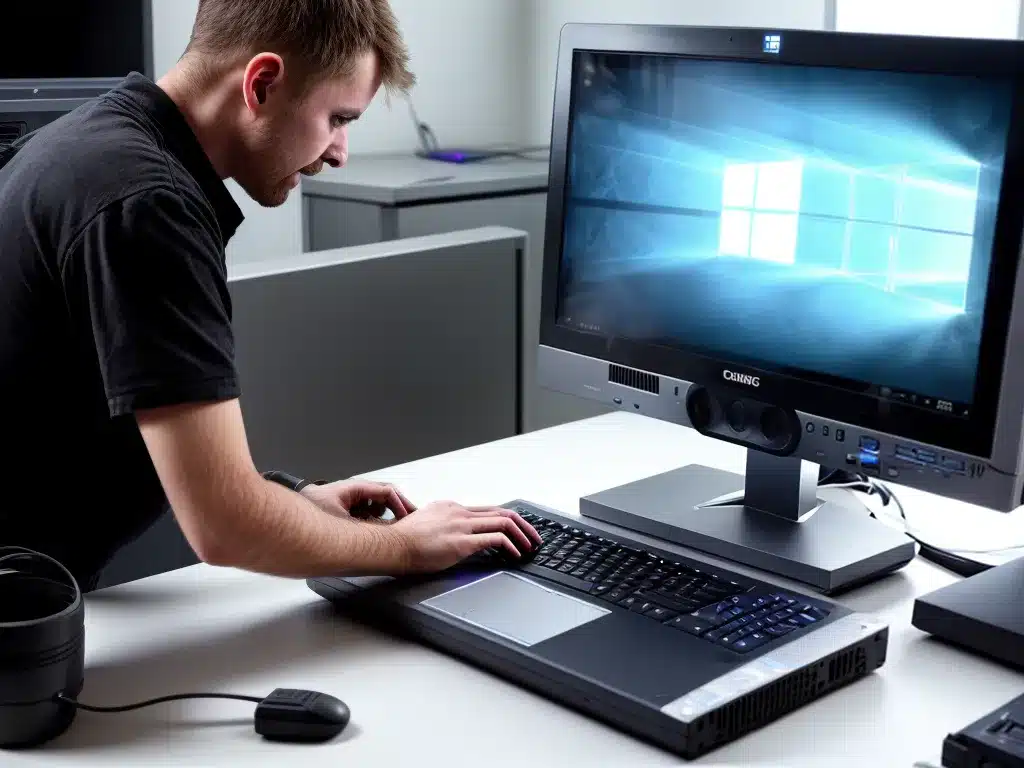
Having issues booting up Windows on your computer can be frustrating. However, there are several troubleshooting steps you can take to get your PC working again. In this article, I will walk through the major causes of Windows failing to boot and how to fix them.
Diagnosing the Issue
When Windows fails to boot, the first step is to diagnose why it is not loading properly. Here are some of the most common reasons Windows might not boot:
Corrupt system files
Over time, key system files can become corrupted through program conflicts, power outages, or malware infections. System file corruption prevents Windows from starting correctly.
Faulty hardware
Hardware components like the hard drive, RAM, or motherboard can fail and cause boot issues. If a piece of hardware has become damaged or outdated, it may prevent Windows from loading.
Incorrect boot order
The BIOS boot order determines the devices and drives that the computer checks when booting up. If the boot order is jumbled, the computer may try booting from the wrong drive.
Bootloader issues
Problems with the Windows bootloader, such as a corrupted Master Boot Record (MBR), can stop the boot process before Windows even begins loading.
Advanced startup settings changed
Accessing advanced startup settings and changing them incorrectly can sometimes create boot problems. For example, if you disable driver signature verification, it may block certain drivers from loading.
Fixing the Issue
Once you have diagnosed the potential source of the problem, you can move on to the repair process. Here are solutions for the most common boot issues:
Startup Repair tool
The Startup Repair tool is an automated diagnostics and recovery utility built into Windows 10 and 8. It scans the system for problems and attempts to fix boot issues automatically.
To access Startup Repair, boot from your Windows install media, choose your language settings, and then select “Repair your computer.” Startup Repair will run and reboot the computer if the repairs are successful.
System Restore
System Restore lets you undo system changes and restore Windows to an earlier working state. It’s handy for undoing a recent update or software change that may have caused boot issues.
On the Advanced Startup Options menu, select “System Restore” and choose a restore point that preceded your boot problems.
System file check
Running the System File Checker scans Windows system files for corruption and replaces them with a working copy. This can resolve boot problems due to a damaged system file.
To run System File Checker, open an elevated Command Prompt and type sfc /scannow. Allow the scan to complete; this may take some time.
Startup Settings
If you think changed startup settings may be preventing Windows from loading, you can return to default settings by accessing Advanced Startup Options. Under “Advanced options,” select “Startup Settings” and click Restart. This will reset startup settings to their default configurations.
Repair or replace hardware
For hardware-related boot failures, you will need to either repair or replace the faulty component. If the hard drive is corrupted, you may need to erase and format it. For other hardware, contact the manufacturer about warranty replacements.
Rebuild BCD
The Boot Configuration Data (BCD) maintains boot configurations and settings. If it gets corrupted, the bootrec /RebuildBcd command can help reconstruct it and get boot working again.
This brief overview covers the most common ways to troubleshoot and repair a Windows computer that will not successfully boot. With the right diagnostics and fixes, you can get your PC back up and running smoothly again. Let me know if you have any other questions!












